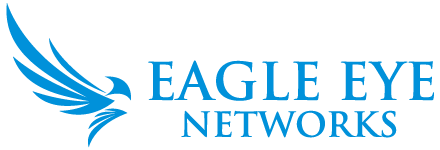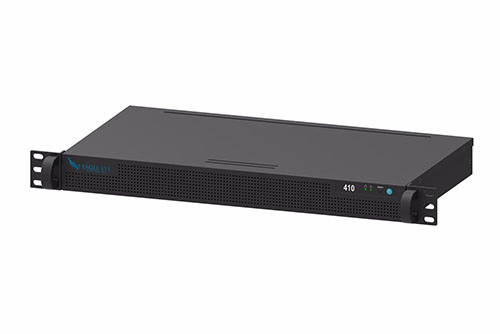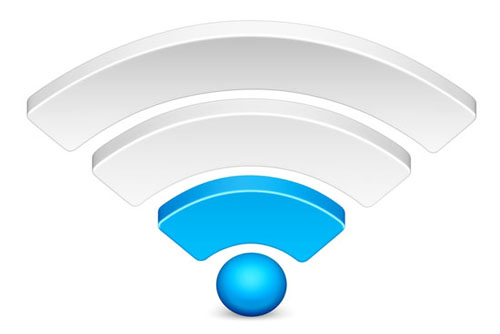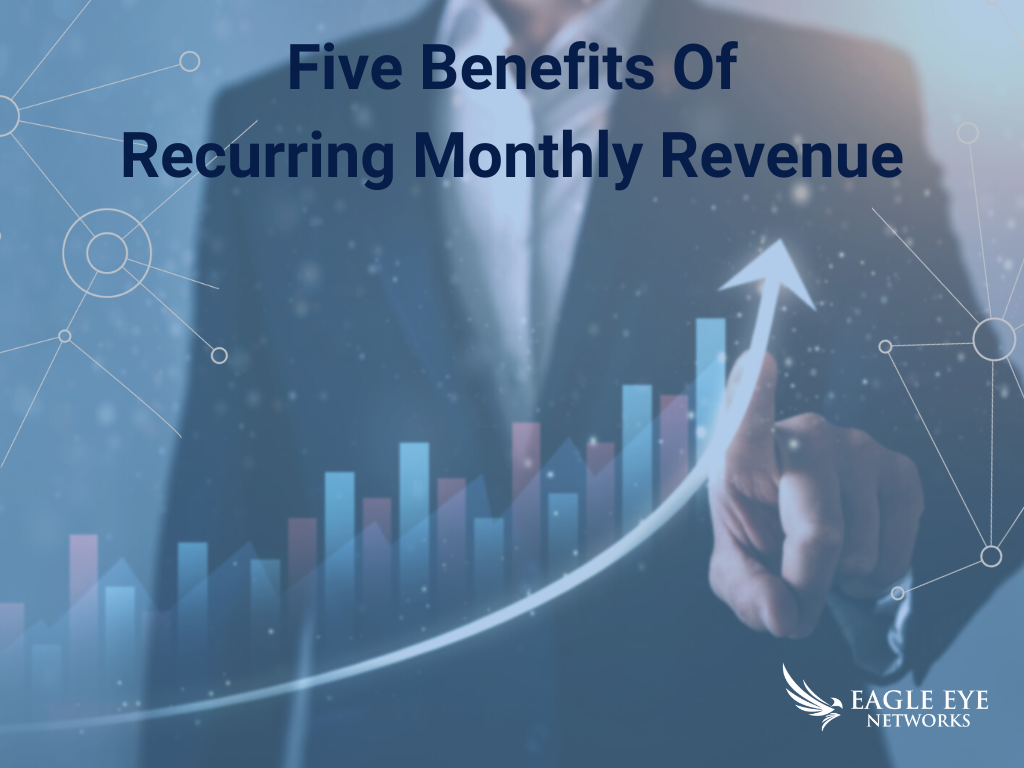
Make the Move to Recurring Revenue and Grow Your Business
While the physical security industry has existed for decades, the technology available to resellers and end users is more advanced and varied than ever before. Yet, many security integrators are stuck doing business the same way they did decades ago.
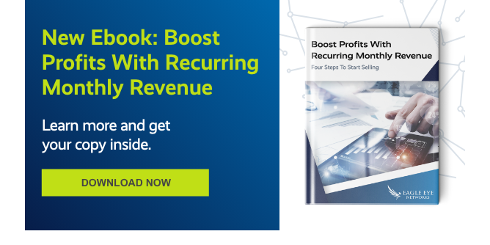
Businesses of all kinds are adopting cloud technology in some way, including email, phone, and backup services. As businesses embrace these new technologies, they are seeking out security solutions that match the benefits of other cloud-based tech. Integrators that develop a strategic business plan to sell recurring monthly revenue (RMR) subscriptions will secure future opportunities and grow their business.
Consider cloud video surveillance as one example of where the security industry is headed. A 2022 video surveillance market report by Novaira Insights found that 68.3% of businesses polled thought their organizations will move to managing things or storing more of their video surveillance data in the cloud. The same poll found 53% of those businesses said the pandemic either “started” or “accelerated” their cloud strategy for video surveillance.
Providing customers with a subscription model can be a game-changer for your business. From substantially higher margins to better customer retention, now is the time to consider shifting part of your security business to a recurring monthly revenue sales model. Eagle Eye Networks resellers can rapidly grow recurring monthly revenue with the industry’s number one cloud video surveillance system.
RMR is like any subscription-based service, where customers pay on a monthly or annual basis for a product or service. While it is a different approach than the traditional systems integrator one-time purchase order (P.O.), with time and thoughtful implementation, it can transform your business. It is not necessary to give up one-time P.O. income to implement this model, and there are many practical ways to achieve this model successfully within a traditional security business.
While there are challenges to any shift in business structures, understanding the benefits of RMR is the crucial first step. Here are five ways the subscription model will enhance your business.
Five Ways RMR Will Enhance Your Business
Add predictability to your business income with recurring monthly revenue. According to a Barnes Associates Industry Overview, “underlying [RMR] increased by two percent” in 2020 over 2019 for the security alarm industry. COVID was a wake-up call, demonstrating that protective measures needed to be in place for security businesses to survive. Offering services that generate recurring revenue ensures that your costs will be covered even when times are otherwise financially challenging.
During the pandemic, many business owners couldn’t be on-site and discovered that their existing surveillance systems didn’t work well for remote access and monitoring. This helped propel the move to cloud video surveillance—great for viewing a business from anywhere—and remote solutions in general.
RMR will also protect your business during an economic downturn or recession. Subscription customers, who have rolled costs across a monthly payment plan, face less upfront expenses that they can push off until later, when revenues improve. Slight monthly increases are much easier for businesses to absorb rather than a one-time significant expense to replace outdated hardware.
The Security Industry Association identified “service models and the cloud” as a major trend in its 2022 Security Megatrends report. You can also look at changes within the security industry to see that recurring revenue as a managed service provider is the future. In order to secure your company’s highest valuation, following long-term market trends is key. Even if you are nowhere close to retirement, there are short-term benefits as well.
Industry M&A expert John Mack of Imperial Capital explains why RMR is critical to getting a vastly better valuation when it is time to sell a business. “There are clearly much higher valuations for companies with high-margin recurring revenue models. Witness those security integrators with mostly one-time install revenues will trade for <1 to 1.5x revenue, while recurring-revenue-focused commercial alarm companies will trade for 4 to 5 times annual recurring revenue or ARR,” Mack said. “And then in the high technology SaaS (software as a service) businesses which are heavily recurring-revenue-focused, you can see revenue multiples of over 10x ARR.”
Better valuations can additionally have short term benefits. Not only can it help you with a loan, it can establish your business as a forward-thinking market leader. Mack touched on these benefits as well, “If you want to attract high-quality managers to your business, the pivot to a SaaS model is putting you where the world is going as opposed to where it has been.”
This Revenue Opportunity Projection chart shows that by 2026 systems integrators who generated $10K per month in hardware on a monthly subscription basis will be making more from subscriptions than one-time bookings. Over five years, it’s estimated that the compounding nature of the subscription profit base will develop from $100K to upwards of $400K.
The lifetime value of your customer becomes greater under the subscription model than it would with a one-time P.O. For example, in the traditional model, your first-year revenue might equal $100K for deployment and maintenance. With deployment cash flow plus subscription fees, an integrator might do $60K in revenue the first year, but after four years the total is closer to $300K, with lower costs to the integrator and a customer who is satisfied with better service.
The Valuation at the Time of Exit chart shows historical valuation of businesses that run a capital intensive business versus a subscription model. The data shows that a $3 million business with a traditional premise-based model was purchased for $4.5 million, whereas a $3 million recurring revenue/subscription model (VSaaS company) was purchased for between $9-15 million.
Improving customer retention and the likelihood that customers will continue to buy new products from you in an increasingly competitive market are great reasons to move to RMR. The subscription model is built on long-term retention of customers as the company continually services existing customers and offers new features and functionality without costly new hardware or expensive truck rolls.
RMR customer retention rates are typically higher than 95% and revenue can grow with added services or cameras. Companies often see greater than 100% revenue retention. With cloud offerings, as new features or system improvements are rolled out via automatic updates, those technology benefits are passed directly and immediately to you and your customers.
The subscription model breaks away from the one time project-based sale and instead establishes an ongoing relationship with the customer. That relationship and the ongoing service creates new opportunities for touchpoints with the customer if you want to engage with them about other solutions within your portfolio. Since you are billing them regularly and have their contact information handy, you can market to them organically. You have the ability to offer trials of new services and features without going onsite. If they like it they can keep it, creating additional monthly revenue for you. If they choose not to move forward, you can remotely disable the feature.
With this relationship, your company remains top of mind for their security needs as a constant resource they can call upon, rather than a one-and-done transaction and installation. The subscription model ends the buying cycle for the customer by incorporating upgrades and warranties into the monthly costs, so as hardware needs to be replaced, you are able to do so without a large one-time cost. By eliminating the buying cycle and delivering continuous service, customers are less likely to shop for a new system unless they are unsatisfied with their service.
The subscription model delivers a better return on investment (ROI) by expanding your revenue significantly with a combination of one-time deployment and subscription fees from long-term contracts. Continuous monthly subscription payments mean that a profit margin can continue to grow with expanded features and services as well as extended subscription contracts.
Despite costing the customer more over the hardware lifetime, subscription models are still mutually beneficial for both your company and customer. This model works for end users as they gain the latest security technology without large upfront capital expenditures (CapEx). The subscription model provides your customers with an OpEx (operational expense) investing model for their security, freeing up their cash for core business investments and enhanced cash flow management, all while stabilizing their monthly expenses with a flat fee.
The subscription model offers greater revenue stability for you, and predictable costs for your customers. The subscription OpEx investment model is a great choice for end users that provides improved business agility, lower upfront costs, and reduced management costs. Since customers gain the latest technology on-demand, they typically will not need highly-skilled staff to manage technology.
With the cloud, data is not reliant on one piece of equipment that will ultimately need to be replaced, leaving the customer vulnerable if cameras go offline, or if equipment breaks down and the customer is unaware. An equipment failure can render their surveillance useless, and then a truck roll and maintenance time is required from the reseller which costs both time and money. The cloud offers remote support services plus extensive features such as analytics and AI intelligence that customers can access whether or not they are on site.
Founder of Barnes Associates, Mike Barnes, spoke of the advantages of this system: “Offering OpEx cloud as a service allows end users to use their money over time for better cash flow. For example, if you ask an end user to cut you a large lump sum check for the installation fee, or give you nothing upfront and instead pay $150 per month, generally you’ll find end users will prefer this option for security as a service. As a provider, you can actually charge more so that over the life of the relationship with the customer your firm will bring in more revenue than with simply a one-time, large upfront fee.”
Considering costs is always a business priority, and one advantage of the subscription-based model is how it reduces your total cost to serve (TCS) the customer. TCS calculates account profitability based on the actual business activities and overhead costs you incur to service that customer. Lowering your cost to serve your customers while improving their service experience is a highlight of the subscription model.
The cloud offers an opportunity to move into subscription revenue while eliminating many of the costs and headaches of on-premise solutions. The price of a server typically accounts for only 15-25% of the total cost of owning and operating the server over its lifetime, which is about a four to five-year period.
On-premise solutions require site visits for maintenance and, without cloud connectivity, software upgrades. Cloud–based systems receive automatic and secure software upgrades across all connected sites and devices. This greatly reduces the need for technicians to visit multiple locations for routine updates. The reduction in onsite service and maintenance calls will free up staff to work on new business development.
In most cases, a cloud solution will provide a lower, more stable TCS for the service provider and therefore also benefit the customer in lowering the total cost of ownership (TCO).
Conclusion
The transition to RMR will help your business stay competitive as new technologies enter the security market. That shift is already underway and now is a great time to implement the subscription model to generate new revenue opportunities and improve customer retention.
Eagle Eye Networks believes in the subscription model for cloud video surveillance and has been providing 100% cloud-managed solutions for our partners since 2012. Eagle Eye Networks resellers can rapidly grow recurring monthly revenue with the industry’s number one cloud video surveillance system. Contact Eagle Eye Networks today to learn how we can assist you in the move to a subscription model.
Learn More About Cloud Video Surveillance from Eagle Eye Networks
Other posts that might interest you

Analog Bridge Released
Eagle Eye Networks Bridge 410 is now available. This model of the Bridge provides all of the same benefits of our other Bridge models, but this one allows you to…
January 9, 2014
Time Lapse Feature Preview
One of the benefits of a centrally managed software solution is that updates can be delivered without requiring the end user to install anything new. One example of this is…
April 25, 2014
Remote storage: low-bandwidth installs
We received an alert that our equipment had lost connection to the internet. As soon as got the alert we also got the preview image for the second it was…
April 25, 2014




